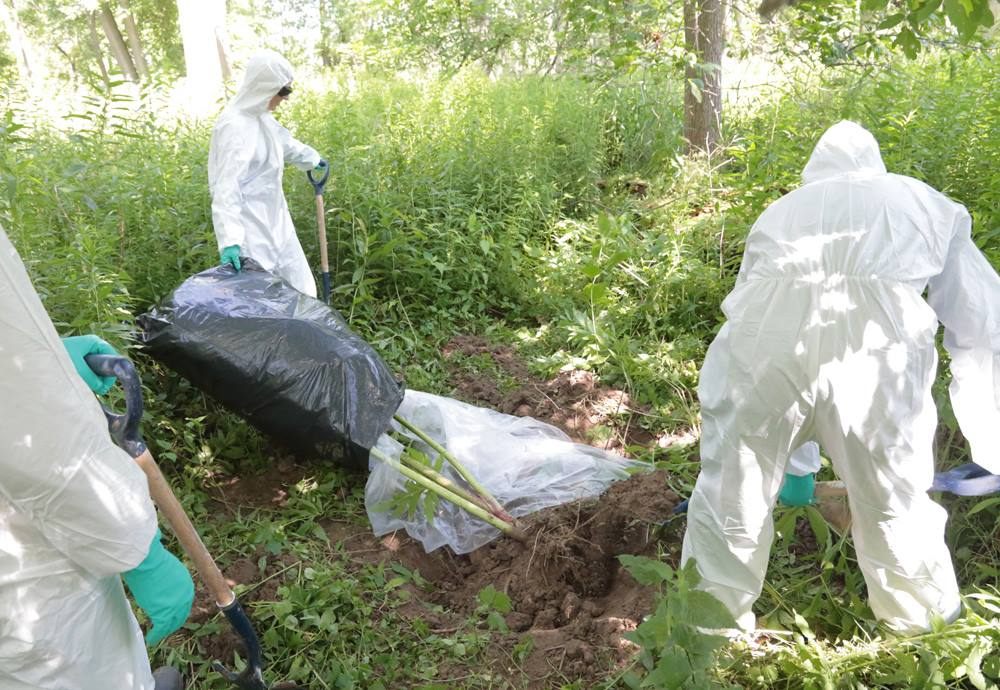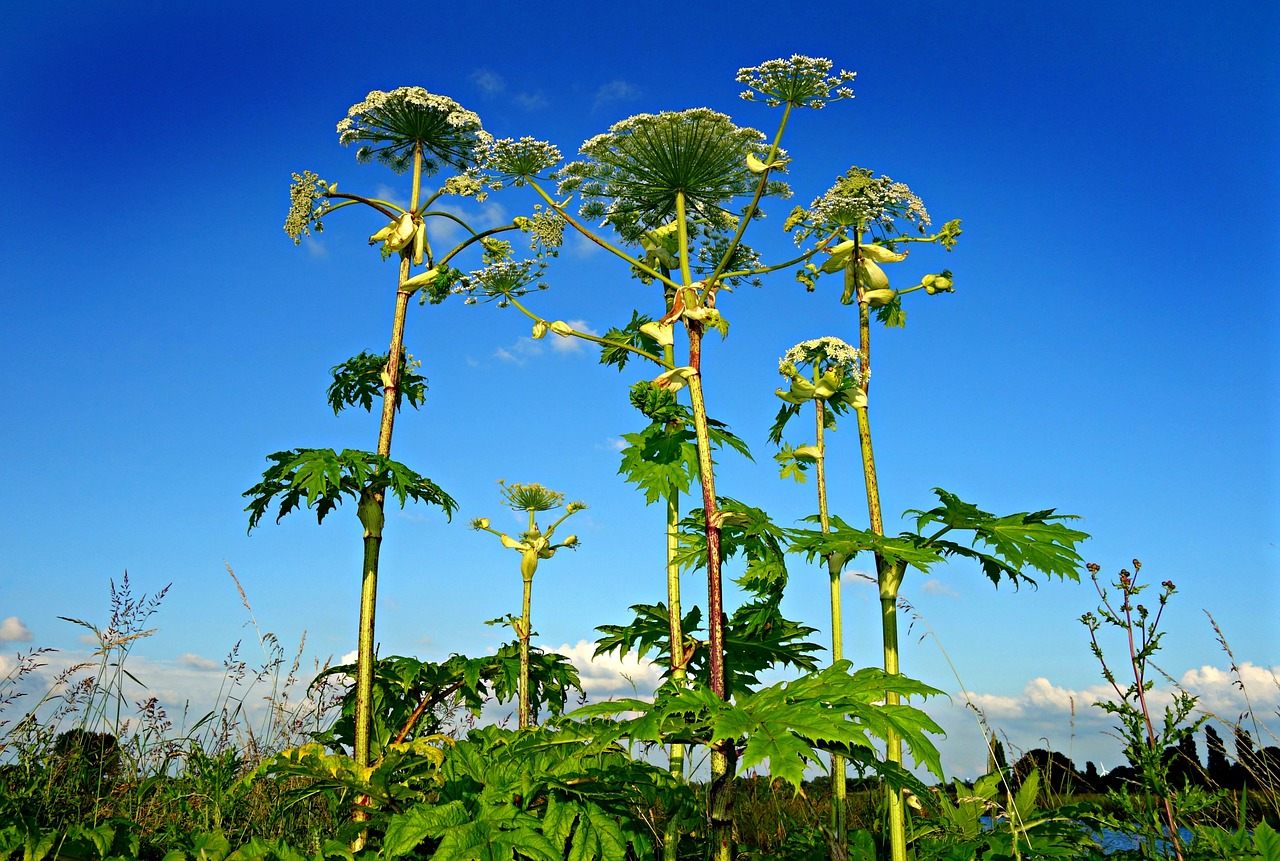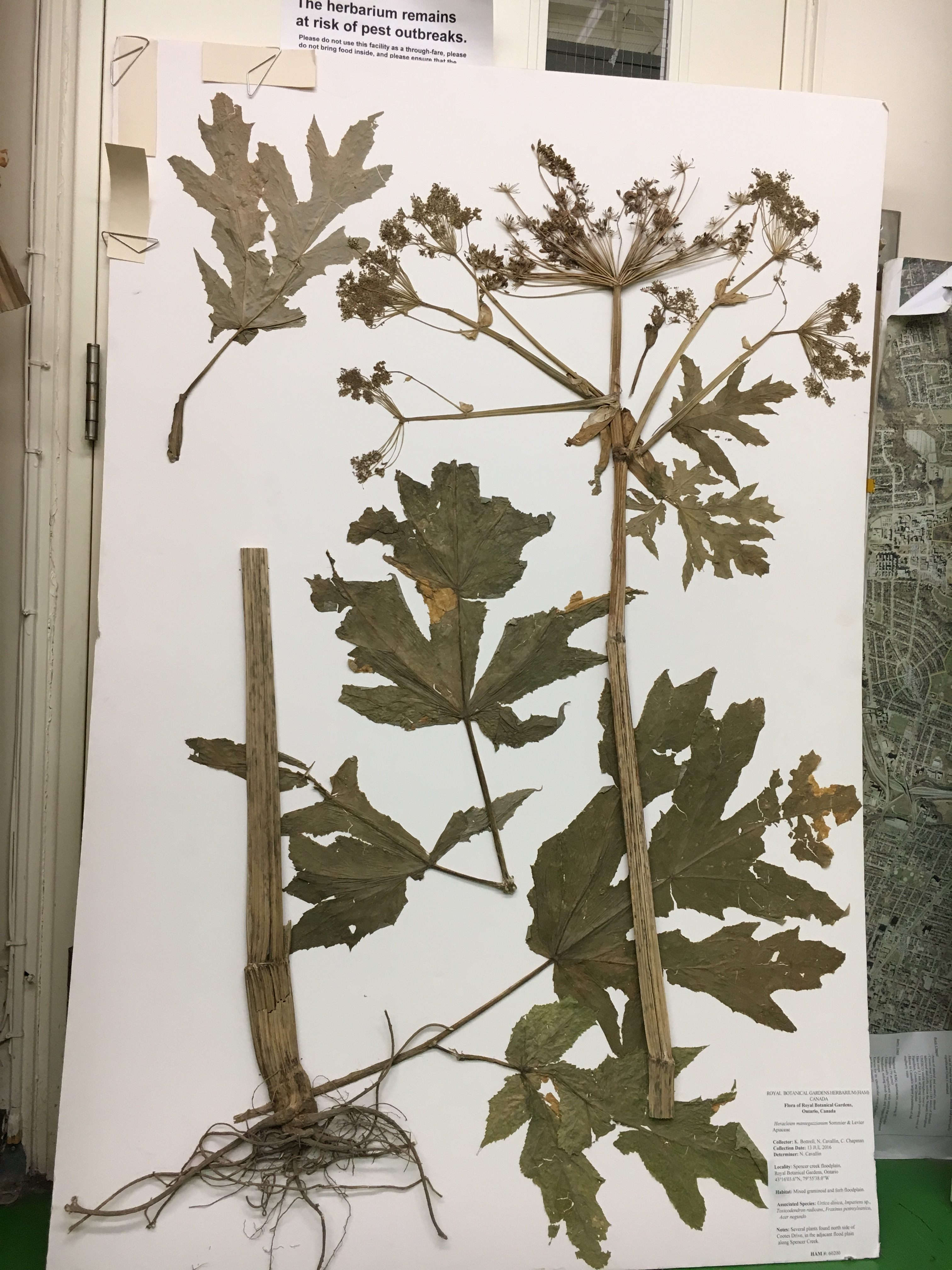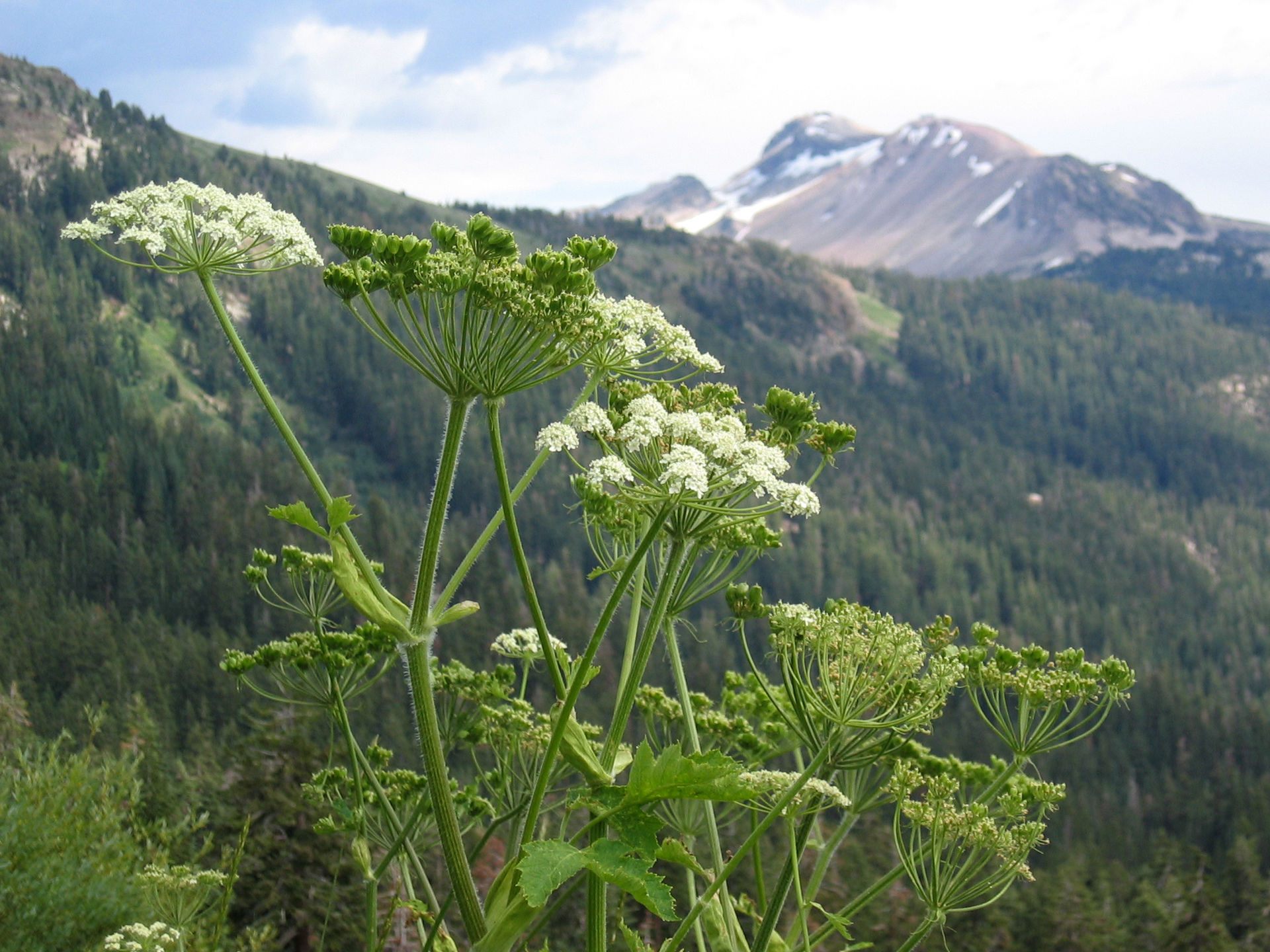How Professionals Wrestle With One of the World’s Scariest Plants
Giant hogweed can cause blistering burns and even blindness. So what do you do if you want to preserve one?

If you happened to be driving past Cootes Paradise Sanctuary in Hamilton, Ontario, on a particular mid-July day in 2016, you might have seen something that left you scratching your head: three figures in head-to-toe hazmat suits and safety goggles, two of them holding shovels and the other toting a human-sized object wrapped in garbage bags, all waiting to cross the four-lane road and get back to their parked truck.
“There were a whole bunch of cars coming by at the time,” recalls Nadia Cavallin, who led the team. “People were slowing down and looking at us with their mouths wide open.”
Despite appearances, Cavallin—the herbarium curator at the Royal Botanical Gardens, of which Cootes Paradise Sanctuary is a part—wasn’t the dangerous organism in this scenario. That honor goes to the thing in the garbage bags: a six-foot giant hogweed, or Heracleum mantegazzianum.

An invasive plant that can grow up to 14 feet tall, the sap of the giant hogweed can cause second-degree burns (thus the hazmat suits) and, potentially, blindness (thus the safety glasses). Plus, it’s sneaky, resembling a number of less harmful plants. By wrestling that specimen out of the ground and back to the lab, Cavallin and her colleagues were risking their skins to educate the public.
On the outside, the giant hogweed doesn’t seem too scary. Each plant’s stem is thick and stately, green with purple accents, and covered in short bristly hairs. The leaves, which can grow up to three feet wide, have intricate, spiky lobes, and look almost like snowflakes. The plant is topped with an umbrella-shaped cluster (or umbel) of small white flowers.
The overall effect is that of an enormous sprig of Queen Anne’s lace, plucked from the bouquet of a giant. Its beauty, in fact, is what brought it to North America in the first place. “It is originally from the Caucasus Mountains,” says Cavallin, and was brought overseas in the early 20th century “as an ornamental plant.”

It’s the inside you have to watch out for. Unlike other dangerous plants, which may get you with their poisonous berries, leaves, or fruits, the giant hogweed’s power is in its sap, which is clear and watery, and contains chemicals called furanocoumarins. These deter animals from eating the plant, and are also phototoxic, which means they make human skin very sensitive to ultraviolet light.
It’s a bit of a sneak attack: the sap often causes blistering burns for days after the initial exposure, and some amount of sun sensitivity can persist for years. (If you’d like, you can see an example of this in action, on a human calf, on page six of this report from the Ontario Invasive Plant Council.) Some scientists who study the weed have scars. If the sap gets in your eyes, it can also cause temporary or permanent blindness. Those who do come into contact with the sap are advised to wash it off with soap and water, and seek medical attention.

Giant hogweed is also bad for other plants: it’s so tall that it outshades many native species, and so good at reproducing that it outcompetes them. One large plant can produce over 100,000 seeds, which are then dispersed by wind and water. It’s considered invasive and noxious in both Canada and the U.S., where it’s found in 11 states, including New York, North Carolina, and Washington.
It’s also caused problems in London for decades, including a scare in the 1970s during which several children ended up blistered all over from playing with the plants. (This may have inspired an early Genesis song, “The Return of the Giant Hogweed,” in which Peter Gabriel scream-sings the immortal lines, “They are invincible / They seem immune to all our herbicidal battering” and “Botanical creature stirs, seeking revenge.”)
For all of these reasons, the Royal Botanical Gardens is always on the lookout for giant hogweed on their grounds, hunting it down and rooting it out wherever they find it. (They ended up nabbing 15 plants total in the summer of 2016, although they didn’t find any this year.) Widespread coverage in Canadian media has ensured that the public is vigilant, too, occasionally to a fault. “Sometimes we get phone calls from people telling us, ‘You have giant hogweed on your property!’” says Cavallin. “And then we go out and see, and it’s not giant hogweed. It’s just another tall plant with a big white umbel.”
There are plenty of those around, some with their own specific rap sheets. Cow parsnip—which looks very much like giant hogweed, but is about half the size, and more fuzzy than bristly—also has dangerous sap. But the reactions it provokes aren’t nearly as bad as hogweed’s. It’s also a native plant, so it doesn’t pose the same ecological risks, and it’s relatively rare, so people aren’t as likely to have run-ins with it.
All of this also goes for purple-stemmed angelica, which has a smooth stem and smaller flowers. “We’ve even had people mistaking wild carrot for it,” says Cavallin. “Sometimes wild carrot grows six feet tall.” None of these requires an emergency phone call.

That July, the plan was to display this particular giant hogweed at the RBG, alongside its various doppelgängers, in order to help educate the public. But once Cavallin and her colleagues got their trophy back to the herbarium, it caused yet more trouble. Although the team is constantly prepping local plants for preservation or display, the tools and methods they generally use are designed for smaller specimens.
“We had never pressed a plant that big,” says Cavallin. “So we experimented.” Still clad in their safety gear, they built a frame out of planks, cardboard, and puppy pee pads, to sponge up moisture. They covered the whole thing in balled-up newspaper, added another layer of absorbers and planks, and ratcheted the whole thing tightly together. (You can find a good accounting of the process in this photo series.)
Although the initial pressing was a success, a later mold outbreak meant they had to treat the plant with alcohol, making it brittle. As a result, its looks were compromised: “It’s not beautiful enough to be a proper display plant,” says Cavallin. “So we’re going to wait to find another one.” If you’re in the Hamilton area next summer, and you see some suited-up botanists toting garbage bags and shovels, you’ll know why. And in the meantime, if you happen to come across a very tall, very lovely white-flowered plant, best to keep your hands to yourself.















Follow us on Twitter to get the latest on the world's hidden wonders.
Like us on Facebook to get the latest on the world's hidden wonders.
Follow us on Twitter Like us on Facebook